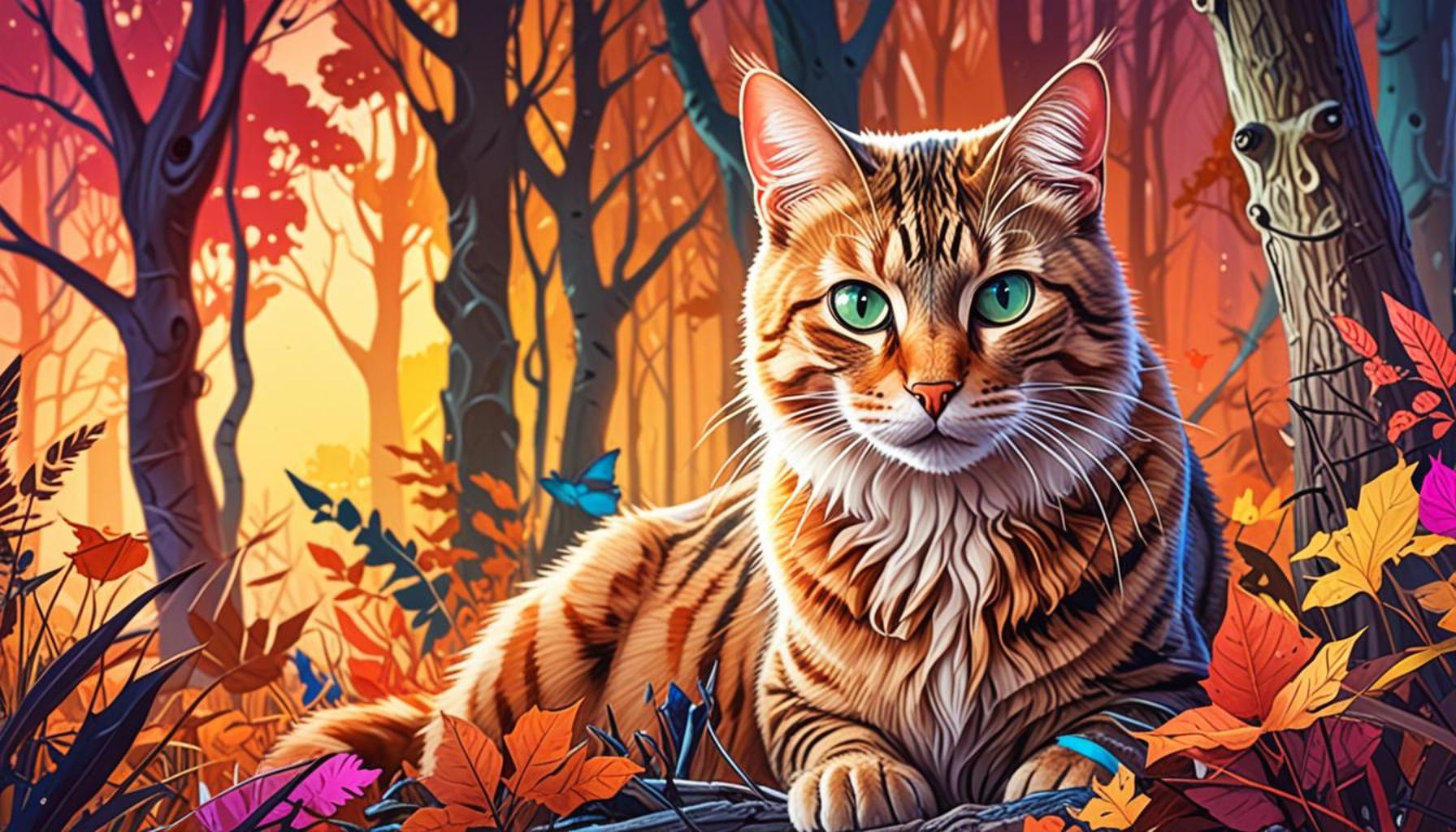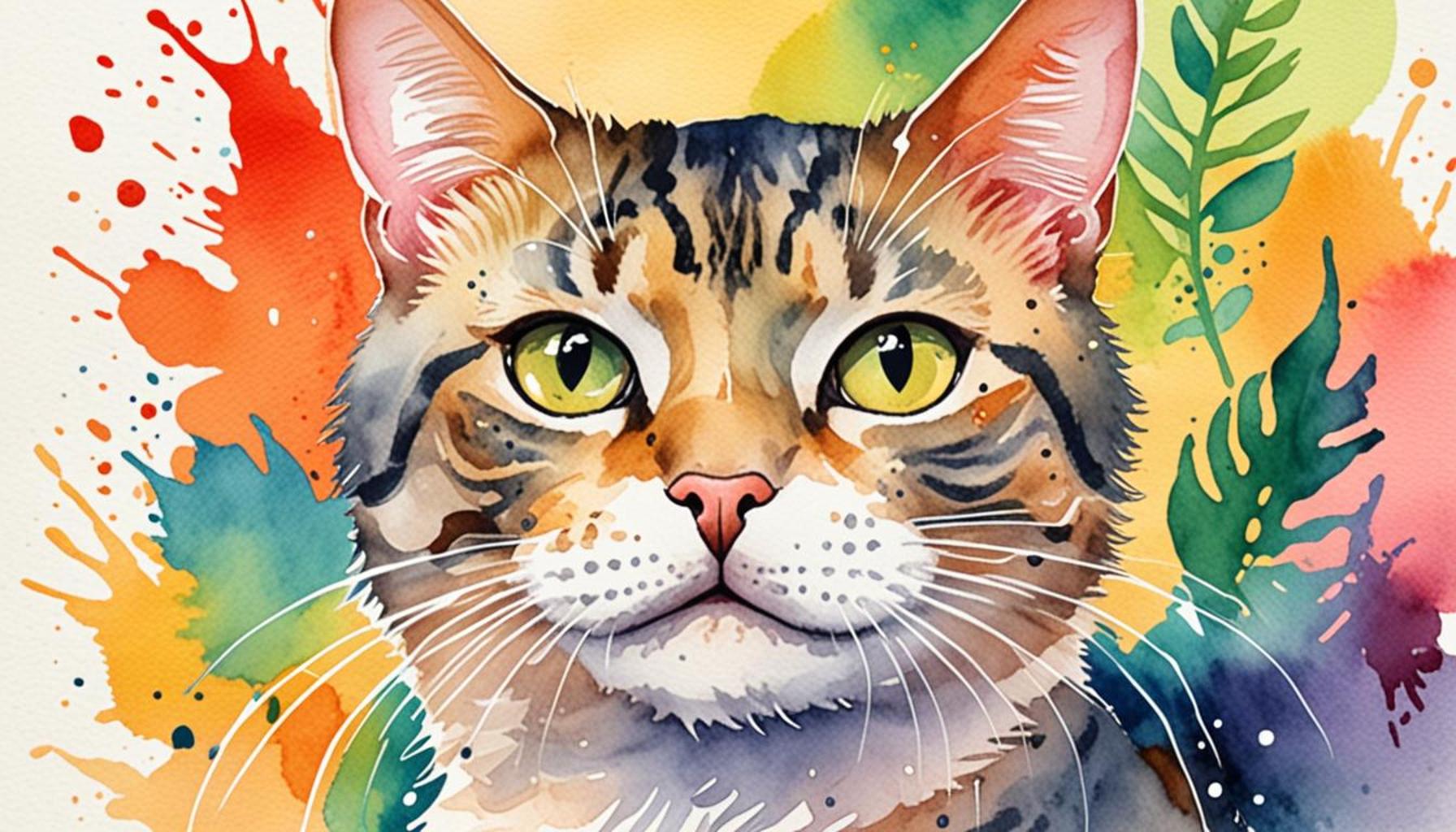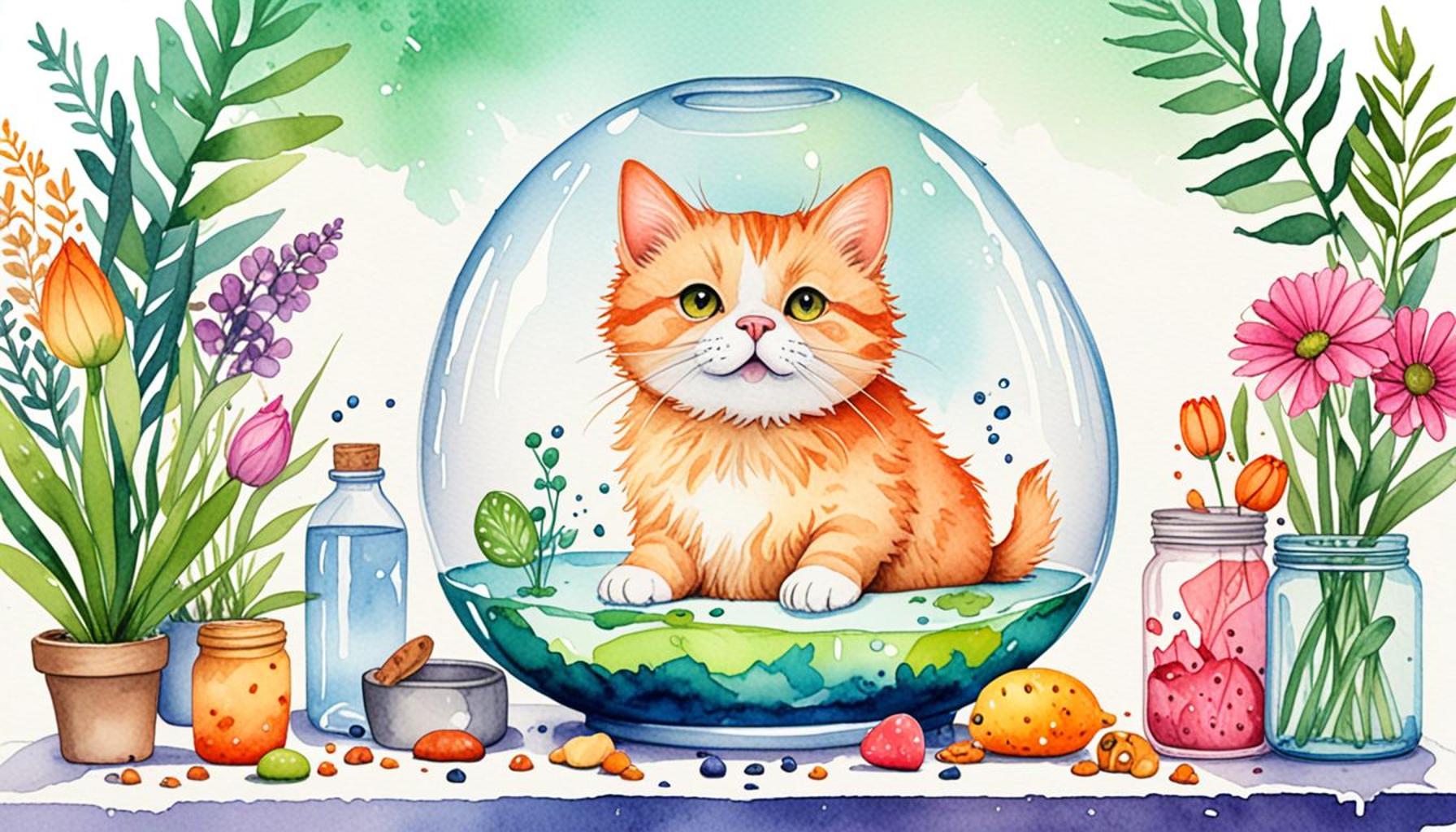Understanding Hunting Behavior in Cats: Myths and Realities

Understanding Feline Hunting Behavior
Feline hunting behavior is a fascinating blend of instinct and environmental influence, transcending mere survival tactics. It’s a complex interplay of physical prowess, mental stimulation, and social dynamics that can leave cat owners both amused and bewildered. Understanding these behaviors is not only crucial for appreciating our feline friends but also for enhancing their quality of life.
Many cat owners often find themselves questioning their pets’ actions. For example, why does a seemingly well-fed indoor cat pounce on a piece of string or chase after a light spot? The answer lies in the innate hunting drive that all cats possess. This drive often manifests in various ways, reflecting both instinctive habits and learned experiences.
Cats hunt only when hungry: Contrary to this popular belief, many cats engage in hunting behavior even when their bellies are full. This phenomenon, known as “play hunting,” serves as both a physical outlet for energy and a way to sharpen their predatory skills. When a cat chases after a feather toy, it’s much more than just a game; it’s practice for the natural instincts that lie dormant within.
Indoor cats never hunt: Many people believe that indoor cats miss out on hunting opportunities, but this isn’t entirely accurate. Indoor cats can exhibit hunting behaviors through play. Interactive play with toys that mimic the actions of prey can stimulate their natural instincts. In fact, studies indicate that indoor cats benefit from simulated hunting to keep their minds sharp and bodies active. For instance, using puzzle feeders can replicate the challenges of hunting while providing mental stimulation.
Cats are solitary hunters: While many cats prefer to hunt alone, there are instances in the wild where cats team up, particularly in social settings or when targeting larger prey. For example, lions, our large feline cousins, are known to hunt collaboratively. This begs the question: how might domestic cats benefit from social play with other cats? Engaging in group play can mimic these behaviors, offering both companionship and a chance to hone their skills through cooperative dynamics.
Exploring the intricate layers of cat hunting behavior not only illuminates the evolutionary traits that influence our pets but also highlights how enriching their environment can lead to a healthier, happier life. Understanding their instincts enables cat owners to design playtime routines that engage their cats physically and mentally, fostering stronger bonds and promoting well-being. By creating opportunities for play that mirror hunting scenarios, we can help meet their natural instincts and keep our indoor companions joyful and active.
Diving into the world of feline hunting offers valuable insights into how these behaviors impact daily interactions and overall cat health. With this knowledge, we can advocate for better practices in pet care, ensuring that our feline friends thrive and, from the comfort of our homes, echo the wild instincts embedded in their DNA.
LEARN MORE: Click here to understand your pet’s emotions
Decoding Cat Behavior: The Reality of Their Hunting Instincts
To comprehend the hunting behavior of cats, we must first explore the underlying instinctual components that drive these marvelous creatures. Cats are, by nature, hunters. Their predatory behavior stems from a long evolutionary lineage, designed for survival in the wild. Understanding this behavior can drastically change how we perceive and interact with our feline companions.
One fascinating aspect of feline hunting is their unique methodology and techniques, which can vary significantly between individuals. Hunting is not merely a reckless chase; it involves meticulous planning and keen awareness of their surroundings. When a cat spots potential prey, it often adopts a specific stance, lowering its body to the ground and moving stealthily. This process of stalking is characterized by a lack of sudden movements, illustrating the cat’s ability to blend stealth with agility. Research shows that such cautious behavior is critical in the wild, where sudden movements could alarm skittish prey, allowing them to escape.
Furthermore, feline hunting can be broken down into distinct phases, which include:
- Stalking: The initial phase where the cat quietly approaches its target, using slow, calculated movements.
- Pouncing: Once in striking range, cats utilize powerful leg muscles to leap forward, often catching their target off-guard.
- Killing: This phase involves using sharp claws and teeth to immobilize prey instantly, a technique fine-tuned through generations.
- Playing: Often overlooked, this phase occurs in indoor cats where play reflects hunting behaviours, providing essential exercise and mental enrichment.
Indoor cats exhibit a paradoxical combination of instinct and adaptation. While they may not have access to natural prey, their predatory skills remain sharp, manifesting through play behavior. For instance, simple household items like crumpled paper balls or laser pointers become simulated prey. This form of play not only satisfies their hunting urge but also mimics real-life scenarios where they would have to use similar skills to catch live prey.
Moreover, the environment plays a pivotal role in shaping hunting behaviors in indoor cats. Enrichment is key. Cats thrive in spaces where they can explore, climb, and hide, with elements that stimulate curiosity and instinctual hunting skills. Owners can enhance their cats’ living spaces by incorporating items like climbing towers, cat trees, and boxes for hiding, thus encouraging a more active lifestyle that reflects their natural behaviors.
Through these insights, it becomes evident that understanding the hunting behavior in cats is not merely about observing their antics in play. Instead, it encompasses a comprehensive view of their biology, instincts, and the environmental factors that interact with their natural hunting instincts. By acknowledging these realities, cat owners can create enriching environments that promote healthy behaviors and fulfill their pets’ inherent needs.
| Behavior Type | Explanation |
|---|---|
| Stalking and Pouncing | Cats utilize a stealthy approach to hunt, using quiet movements and energy-efficient techniques. |
| Play Behavior | Many playful actions mimic hunting skills, offering physical and mental stimulation that reflects their predatory instincts. |
| Hunting Patterns | Understanding hunting patterns can help owners create engaging environments that fulfill their cat’s natural desires. |
| Social Hunting | Some cats show cooperative behaviors in hunting, showcasing intelligence and adaptability in social structures. |
Hunting behavior in cats goes beyond mere instinct; it is a complex interplay of genetics, environment, and social behavior. The myths surrounding this topic often lead to misconceptions that can affect how owners perceive and interact with their feline companions. For instance, the belief that all cats are solitary hunters can obscure the reality that many exhibit social behaviors and even collaborate in hunting scenarios. Moreover, recognizing the significance of play behavior is crucial; owners might overlook these activities as mere entertainment when they are actually vital for mental and physical upkeep. Engaging with your cat in a way that aligns with their natural behaviors can foster a trusting and enriching bond, bridging the gap between myths and the realities of their hunting instinct. Understanding these behaviors not only enhances the care you provide but also supports their well-being, allowing pet owners to appreciate their cats’ true nature.
DISCOVER MORE: Click here to learn about the impact of dental health on your pet’s life
Understanding the Myths Surrounding Cat Hunting Behavior
As we delve deeper into understanding the hunting behavior of cats, it becomes essential to address some prevalent myths that may skew perceptions about our feline companions. These misconceptions often arise from anthropomorphism or oversimplified notions about animal behavior, leading to misunderstandings that can affect how we care for and interact with our pets.
One common myth is that cats only hunt for food. While it’s true that feral cats rely on hunting for survival, domestic cats often hunt out of instinct rather than need. Indoor cats, for example, may not require hunting to fill their bellies, yet they engage in hunting behavior as a way to fulfill their natural instincts. This instinctual play is crucial for their mental stimulation, providing them with the physical exercise they need to stay healthy. Studies have shown that cats that engage in regular play that mimics hunting are less likely to suffer from obesity and related health issues.
Another prevalent myth is the belief that all cats are solitary hunters. While it is true that many domestic cats exhibit solitary hunting behavior, certain cat species, such as cheetahs and lions, showcase complex social structures that can influence their hunting techniques. In fact, studies have demonstrated that cats can adjust their hunting strategies based on their environment, social settings, and even their familiarity with prey. For instance, feral cats are known to hunt cooperatively at times, particularly when targeting larger prey. This adaptability speaks to the intelligence of cats and their ability to learn from experience.
Behavioral scientists have also discovered that play behavior is not just about physical exercise. It also plays a crucial role in teaching young cats important hunting skills. Kittens engage in play fighting and stalking games, honing their instincts before they ever hunt real prey. In a domesticated setting, allowing cats the freedom to engage in supervised play can significantly impact their overall development and well-being. It’s a natural way to mimic the experience of stalking and pouncing while allowing cats to explore their abilities in a safe environment.
Moreover, some pet owners may mistakenly believe that indoor cats lack the ability to express their hunting instincts effectively. This assertion could not be further from the truth. Indoor environments can be dynamically rewarding for cats if designed thoughtfully. Incorporating interactive toys, puzzle feeders, and various play surfaces can recreate the thrill of hunting. Many cats benefit from “hunting for dinner” techniques, where meals are placed in different locations for the cat to find—a method that sits at the intersection of feeding and playtime.
Additionally, there exists a misconception that cats are indiscriminate killers who hunt for sport, bringing home trophies for their owners. While it is true that some cats demonstrate this behavior, it largely stems from instinctual urges rather than a desire to kill. Understanding this drives home the point that these natural hunting instincts are intricately tied to survival and instinctual satisfaction. High-energy breeds such as Siamese or Abyssinians may be particularly prone to showcasing this behavior, indicating the need for varied and enriched environments focused on their innate instincts.
Ultimately, unraveling the truths behind feline hunting behaviors empowers owners to appreciate and support their pets’ inherent needs. By acknowledging the realities of hunting behavior, cat owners can provide optimal environments that not only foster physical health but also enrich their pets’ emotional and mental experiences.
DISCOVER MORE: Click here for insightful training strategies
Conclusion: Embracing the Complex Nature of Feline Hunting Behavior
In summarizing the exploration of cat hunting behavior, it is clear that understanding this fascinating aspect goes beyond debunking common myths. Rather, it invites pet owners to embrace the intricate realities that define the feline experience. From recognizing that hunting serves important instinctual and behavioral purposes—even in indoor cats—to appreciating the adaptability and intelligence displayed by these creatures, we uncover a deeper connection to our pets.
It becomes evident that the hunting instinct in cats is not solely about the pursuit of food but a vital component of their overall well-being. Engaging with their natural instincts through play and environmental enrichment not only supports their mental and physical health but also fosters a fulfilling and enriching life. By creating varied spaces with interactive toys and encouraging natural behaviors, cat owners can transform their homes into stimulating environments where felines can thrive.
Furthermore, as we shift our perspective from misconceptions to informed realities, we cultivate a relationship with our cats that is centered on understanding their needs and behaviors. This empathy not only enhances their quality of life but also fosters a lasting bond between humans and their feline companions. Ultimately, investing time in learning about hunting behavior in cats equips owners to make informed choices that honor their pets’ instincts and enrich their lives, paving the way for a fulfilled and happy furry friend.


